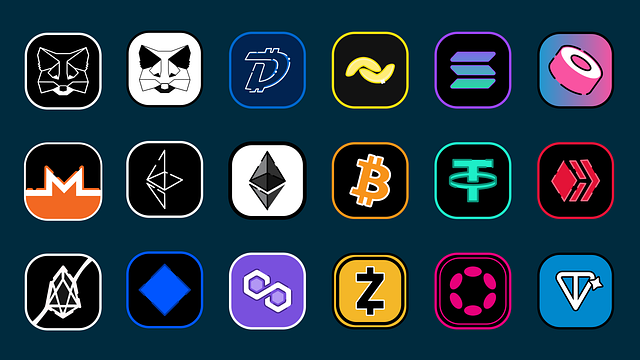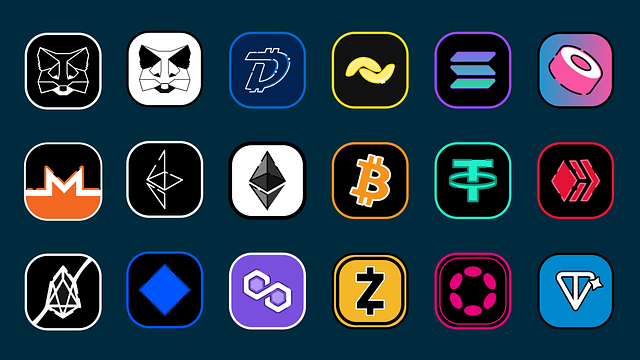Layer-1 blockchains Solana and Ethereum are pivotal for decentralized applications (dApps), offering secure peer-to-peer transactions. With remarkable speeds, low latency, and energy efficiency, they drive Web3 innovation. Solana's innovative scalability, achieved through its Proof of Stake mechanism, processes thousands of transactions per second, making it ideal for resource-intensive tasks like DeFi and NFTs. Ethereum, a pioneer with smart contracts and decentralized finance, faces competition from Solana in terms of speed, cost, and energy efficiency. Both blockchains have distinct consensus mechanisms: Solana's PoS is more energy-efficient, while Ethereum uses Proof of Work. Solana's advantages include lower transaction fees and faster processing, attracting developers for high-performance dApps. Ethereum, despite challenges, remains dominant in the dApp space and NFTs due to its established ecosystem and ongoing upgrades like Ethereum 2.0.
In the ever-evolving landscape of blockchain technology, Solana has emerged as a formidable competitor to established networks like Ethereum. This comparative analysis delves into the intricacies of these Layer-1 blockchains, examining their unique strengths and weaknesses. From scalability and transaction speed to smart contracts and developer ecosystems, we explore why Solana‘s high-speed transactions and energy efficiency are challenging Ethereum‘s dominance in decentralized applications, especially as the blockchain space continues to grow.
- Understanding Layer-1 Blockchains: A Foundation for Decentralized Applications
- Solana: Unlocking Scalability and Performance with High-Speed Transactions
- Ethereum: The Pioneer in Smart Contracts and Decentralized Finance
- Architectural Differences: Proof of Stake vs Proof of Work
- Gas Fees and Transaction Costs: A Comparative Analysis
- Developer Ecosystem and Community Support: Who Has the Edge?
- Use Cases and Adoption: Real-World Applications of Solana and Ethereum
Understanding Layer-1 Blockchains: A Foundation for Decentralized Applications

Layer-1 blockchains form the backbone of decentralized applications, providing the essential infrastructure for secure and transparent data management. At their core, these networks enable peer-to-peer transactions and data storage without relying on intermediaries. Solana and Ethereum, two prominent players in the blockchain space, have evolved to become powerful tools for developers building decentralized futures.
Understanding Layer-1 is crucial when evaluating platforms like Solana and Ethereum. These blockchains offer unique features such as high transaction throughput, low latency, and energy efficiency, which are vital for handling complex tasks and fostering innovation. As the demand for decentralized solutions grows, the capabilities of Layer-1 networks will continue to shape the development and adoption of Web3 applications, with Solana and Ethereum leading the charge in this transformative journey.
Solana: Unlocking Scalability and Performance with High-Speed Transactions

Solana, a relatively newer blockchain network, has gained significant traction for its ability to unlock scalability and performance. One of its key strengths lies in facilitating high-speed transactions, setting it apart from more established platforms like Ethereum. By utilizing a unique consensus mechanism, Solana achieves remarkable transaction throughput, enabling thousands of transactions per second. This speed is particularly appealing for applications requiring fast processing, such as decentralized finance (DeFi) and non-fungible tokens (NFTs).
In the competitive landscape of Layer-1 blockchains, Solana’s performance metrics stand out, promising to revolutionize various industries. Its ability to process a vast number of transactions efficiently addresses the long-standing scalability challenges faced by Ethereum. As a result, Solana presents an exciting alternative for developers seeking to build decentralized applications (dApps) with superior speed and cost-effectiveness.
Ethereum: The Pioneer in Smart Contracts and Decentralized Finance

Ethereum, often hailed as the pioneer in the blockchain space, has carved a significant niche for itself, especially in the realms of smart contracts and decentralized finance (DeFi). Since its inception, Ethereum’s smart contract functionality has revolutionized the way digital agreements are structured and executed. This capability has opened doors to a myriad of applications beyond traditional cryptocurrencies, including decentralized exchanges, lending platforms, and even play-to-earn games.
The network’s robust ecosystem attracts developers and investors alike with its proven track record in fostering innovation. As a result, Ethereum has become a hub for DeFi projects, leading to the creation of various tokens and sophisticated financial instruments. The platform’s popularity has not gone unnoticed by Solana, which aims to challenge Ethereum’s dominance by offering alternative solutions for scalability and transaction speed while maintaining a focus on security and decentralization.
Architectural Differences: Proof of Stake vs Proof of Work

Solana and Ethereum, both powerful Layer-1 blockchains, differ significantly in their architectural approaches. One of the most notable distinctions lies in their consensus mechanisms—Proof of Stake (PoS) for Solana versus Proof of Work (PoW) for Ethereum. PoS operates by rewarding validators who stake their cryptocurrency to secure the network. This mechanism is considered more energy-efficient and environmentally friendly than PoW, which requires complex computational tasks using significant electrical power.
Solana’s PoS system offers advantages such as faster block production times and lower transaction fees compared to Ethereum’s PoW. Moreover, Solana’s architecture allows for higher throughput and scalability, making it attractive for applications demanding rapid and efficient transactions. These architectural differences underscore the unique strengths of each blockchain, shaping their respective positions in the evolving landscape of decentralized technologies.
Gas Fees and Transaction Costs: A Comparative Analysis

In the competitive landscape of blockchain technology, gas fees and transaction costs are key performance indicators that directly impact user experience and adoption. When comparing Solana to Ethereum, it’s evident that Solana offers a significant advantage in terms of cost-efficiency. Solana’s unique architecture allows for faster processing times and higher throughput, resulting in lower transaction fees compared to Ethereum. While Ethereum’s Gas Fees can be prohibitive during periods of high network congestion, Solana maintains consistent and relatively low fees, making it an attractive option for developers building decentralized applications (dApps).
This cost differential is further amplified by the energy consumption aspect. Solana’s proof-of-stake consensus mechanism reduces energy usage dramatically compared to Ethereum’s proof-of-work system. Lower energy consumption translates into lower operational costs for network participants and users, contributing to a more sustainable and economically viable blockchain ecosystem. In essence, Solana’s competitive edge in gas fees and transaction costs positions it as a formidable alternative to Ethereum, especially for projects seeking scalability, affordability, and environmental sustainability.
Developer Ecosystem and Community Support: Who Has the Edge?

Solana and Ethereum both boast vibrant developer ecosystems, but Solana has emerged as a potential game-changer in recent years. The former offers developers a more accessible and efficient environment with its high-speed transactions and low fees, encouraging innovation and attracting new projects. This is partly due to its strong community support, which actively contributes to the network’s growth through open-source development and a shared vision for scalability.
In contrast, Ethereum has long been considered the go-to platform for decentralized applications (dApps) and smart contracts, fostering a mature ecosystem with numerous established projects and a vast talent pool. However, its high transaction costs and slower block times can be deterrents for developers looking to build and scale quickly. Nonetheless, Ethereum’s community remains dedicated, continuously exploring solutions like Layer-2 scaling and EVM compatibility to enhance the network’s capabilities.
Use Cases and Adoption: Real-World Applications of Solana and Ethereum

Solana and Ethereum, both powerful Layer-1 blockchains, have distinct use cases and adoption stories. Solana has carved a niche for itself in high-performance decentralized finance (DeFi) applications, with its ability to process millions of transactions per second making it an attractive option for fast, low-cost smart contracts. This has led to the proliferation of DeFi protocols on Solana, attracting developers and users looking for efficient financial services.
On the other hand, Ethereum continues to be a dominant force in the space, thanks to its robust ecosystem of decentralized applications (dApps) and smart contracts. Its extensive adoption by major companies and its role as the go-to platform for non-fungible tokens (NFTs) solidify its position. While Ethereum’s transaction speeds have been a point of contention, ongoing upgrades like Ethereum 2.0 aim to address these issues, further enhancing its appeal in real-world applications.
In this comparative analysis, we’ve explored the distinct offerings of Solana and Ethereum, two prominent Layer-1 blockchains. Solana distinguishes itself through exceptional scalability and high-speed transactions, while Ethereum remains the pioneer in smart contracts and decentralized finance. Their architectural differences, specifically Proof of Stake versus Proof of Work, impact gas fees and transaction costs significantly. Both platforms have thriving developer ecosystems, though Solana is gaining traction among developers seeking a more efficient alternative to Ethereum. In terms of real-world applications, both blockchains showcase diverse use cases, highlighting their versatility in shaping the future of decentralized technologies. Ultimately, the choice between Solana and Ethereum depends on specific project requirements and development priorities.








Leave a Reply